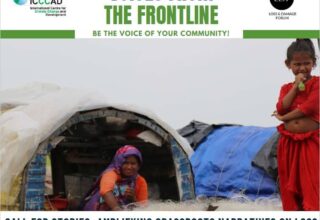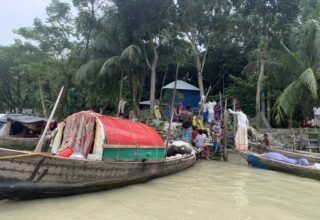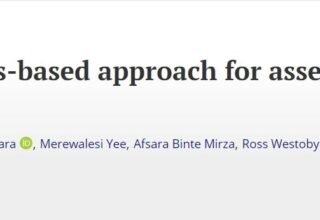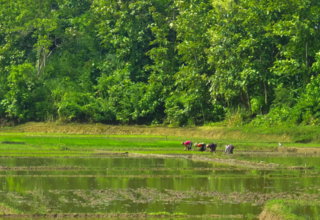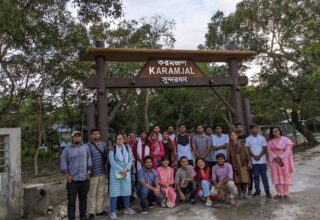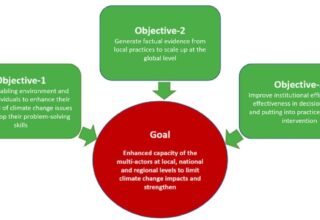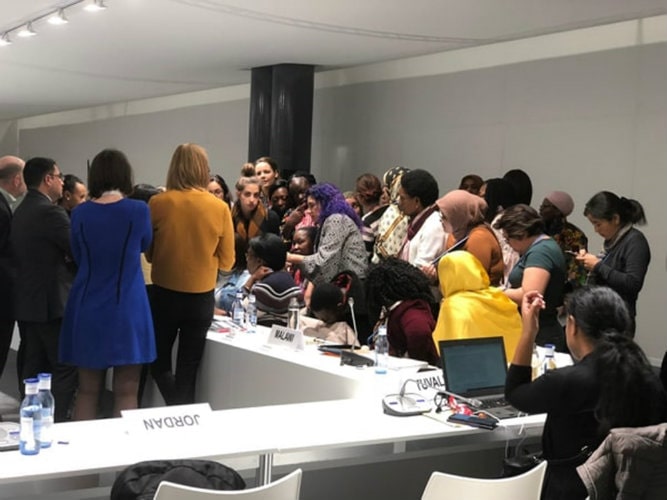
However, the frustrating climate talks could produce a key breakthrough and rare success story at this year’s COP was the decision on a new five-year gender action plan (GAP), envisioned to “support the implementation of gender-related decisions and mandates in the UNFCCC process”. The new GAP has been drawn from the original proposal, agreed at COP 20 as Lima Work Programme on gender that “seeks to advance women’s full, equal, and meaningful participation and promote gender-responsive climate policy and the mainstreaming of a gender perspective”
While at COP25 talks reached their final days, tensions grew high and the negotiations on gender action plan was indeed a tough one. Parties initially struggling to come to a consensus to deliver a text for consideration, owing in part to disagreements about the inclusion of text relating to human rights, the rights of the indigenous community and just transition. There had been constant advocacy and demands raised by the women and gender groups in particular by the members of Women and Gender Constituency (WGC), that calls for greater focus on meaningful implementation and scaling up gender-just climate solutions at all levels. To make it a success, political will was also built through the effective mobilization efforts of both the Women and Gender Constituency and other civil society allies via social media, submitting letters to Ministers, and protests by civil society movements those were critical in the last hour of negotiations. Nevertheless, the GAP was unanimously agreed to by governments who are called to lead or contribute to actions toward promoting gender equality as well as social inclusion in the UNFCCC process. The final outcome was applauded by the women and rights group with the expectations that the state parties would act upon and take necessary steps in the coming year as enshrined in the text to implement the GAP.
If we look back the history of GAP, in COP 22, the Subsidiary Body for Implementation (SBI) was first requested to develop a gender action plan (GAP) in order to support the implementation of gender-related decisions and mandates in the UNFCCC process. The crucial objective was defining priority areas, key activities and indicators, timelines for implementation, responsible and key actors and indicative resource requirements for each activity, and to further elaborate its review and monitoring processes under GAP. It is therefore intended to mainstreaming of a gender perspective in the implementation of the Convention and the work of Parties, the secretariat, United Nations entities and all stakeholders at all levels.
The enhanced Lima work program on gender and its gender action plan that was adopted at COP 25 in December 2019 in Madrid put forward a stronger text and clear pledge to ensure gender equality in combating climate change. The decision text acknowledged that climate change is a common concern of humankind where Parties should, when taking action to address climate change, respect, promote and consider their respective obligations on human rights, the right to health, the rights of indigenous peoples, local communities, migrants, children, persons with disabilities and people in vulnerable situations and the right to development, as well as gender equality, empowerment of women and intergenerational equity. It has clearly set priorities to take into account the imperatives of a just transition of the workforce and the creation of decent work and quality jobs in accordance with nationally defined development priorities.
The key priority areas under Gender Action Plan are: A. Capacity-building, knowledge sharing and communication to enhance the understanding and expertise of stakeholders on the systematic integration of gender considerations and the application of such understanding and expertise in the thematic areas under the Convention and the Paris Agreement and in policies, programmes and projects on the ground. B. Gender balance, participation and women’s leadership which to achieve and sustain the full, equal and meaningful participation of women in the UNFCCC process. C. Strengthen coherence and the integration of gender considerations within the work of UNFCCC bodies, the secretariat and other United Nation entities and stakeholders towards the consistent implementation of gender-related mandates and activities. D. Gender-responsive implementation and means of implementation which aims to ensure the respect, promotion and consideration of gender equality and the empowerment of women in the implementation of the Convention and the Paris Agreement. Finally, E.Monitoring and reporting to improve tracking in relation to the implementation of the GAP.
While we have the ambitious Gender Action Plan in place, now apparently the question is how much we are prompt to fulfil our responsibility to translate this agreed text into reality. Our long battle to aspire gender equality at all levels of society require adequate financing and political will at the national level. The only light that is showing transformative pathways for future climate talk shouldn’t be faded in frustration again! We need to invest in it to keep the hope going on!
Originally this article was published on January 20th, 2020 at Dhaka Tribune . The author Shaila Shahid is Senior Programme Coordinator, Gender and Climate Change at ICCCAD.
Email: shahinshaila@gmail.com

